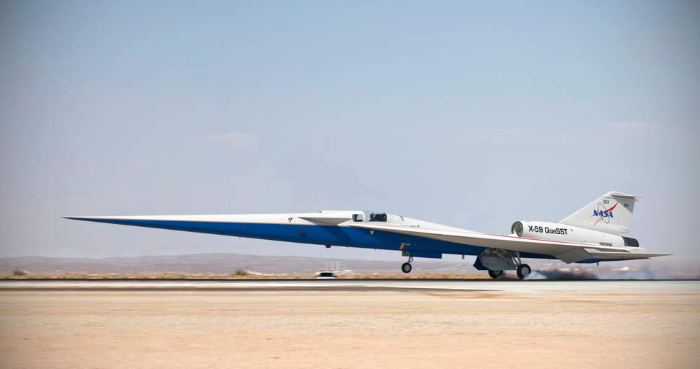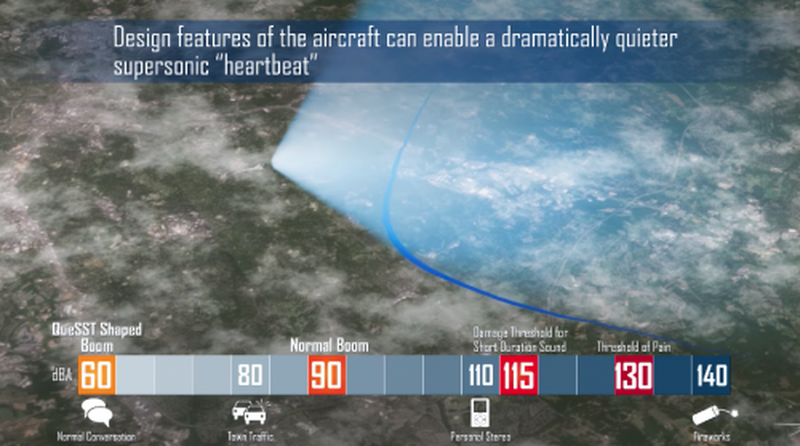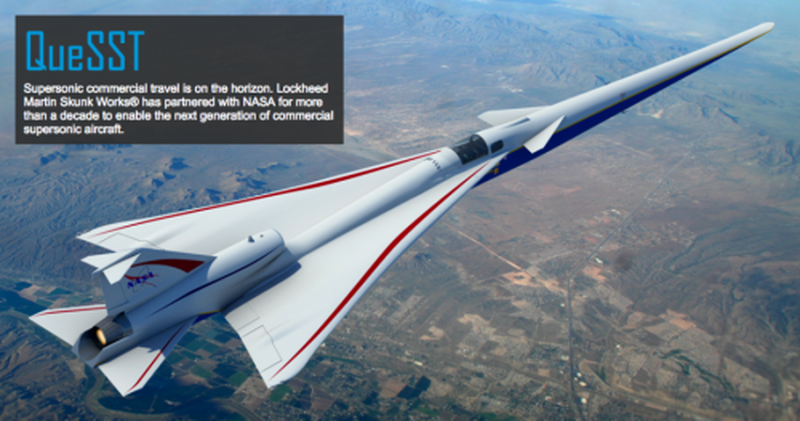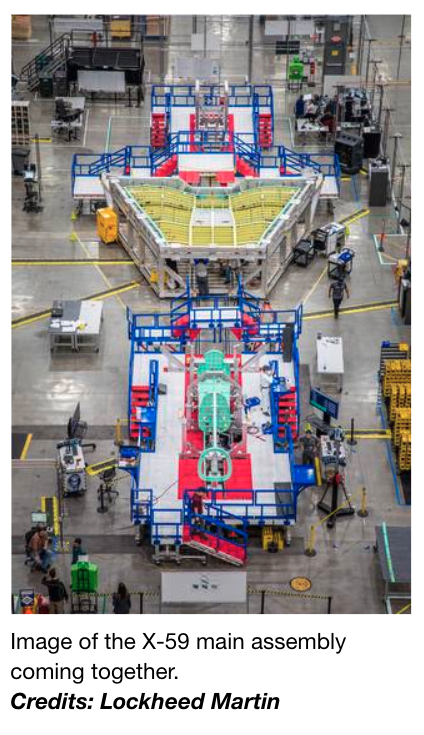“We Can’t Wait To See This Bird Fly!”: NASA’s X-59 Quiet SuperSonic Jet Cleared For Final Assembly
NASA’s X-59 Quiet SuperSonic Technology (QueSST) plane has been cleared for large scale assembly, said a NASA press release, dated Dec. 12.
NASA will build the X-59 in partnership with Lockheed Martin and start test flights in 2021. The goal of the flights is to reduce the noise a sonic boom makes to a sonic thump, or basically as loud as a car door.
Tests are expected to occur over major US metro areas as the X-59 cruises at 940 mph at 55,000 feet.
The X-59’s long, slender design will allow it to reduce the loudness of a sonic boom to that of a gentle thump.
“This aircraft has the potential to transform aviation in the United States and around the world by making faster-than-sound air travel overland possible for everyone,” NASA Administrator Jim Bridenstine recently said.
“We can’t wait to see this bird fly!”
The X-59 will cost about $250 million to construct, Lockheed Martin’s Skunk Works factory in Palmdale, California, will be responsible for the build.
Skunk Works has also been responsible for developing some of the most secretive aircraft in the world, including the Lockheed U-2, Lockheed F-117 Nighthawk, and Lockheed SR-71 Blackbird.
NASA’s decision to approve the X-59 for assembly is the first experimental plane to be cleared in more than three decades.
The Key Decision Point-D (KDP-D) was the last obstacle for the X-59 before officials reconvene in 4Q20 before the plane’s flight in 2021.
“With the completion of KDP-D we’ve shown the project is on schedule, it’s well planned and on track. We have everything in place to continue this historic research mission for the nation’s air-traveling public,” said Bob Pearce, NASA’s associate administrator for Aeronautics.
Our @NASAAero X-59 ✈️ was cleared for final assembly & integration of its systems. The X-59 is designed to fly faster than sound without loud sonic booms. Data from the flights will help establish new rules for commercial supersonic air travel over land. https://t.co/NdLZau5ffC pic.twitter.com/MJZWKcEsBx
— NASA (@NASA) December 17, 2019
With the construction of the X-59 already underway at Skunk Works, by late 2021, the world will know if the technology can actually reduce the noise of a sonic boom. If so, then this could pave the way for the reintroduction of supersonic flight for commercial airliners by 2030.
Tyler Durden
Wed, 12/18/2019 – 23:25
via ZeroHedge News https://ift.tt/2EB4Oq8 Tyler Durden



